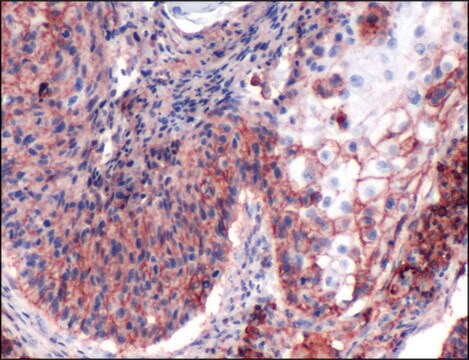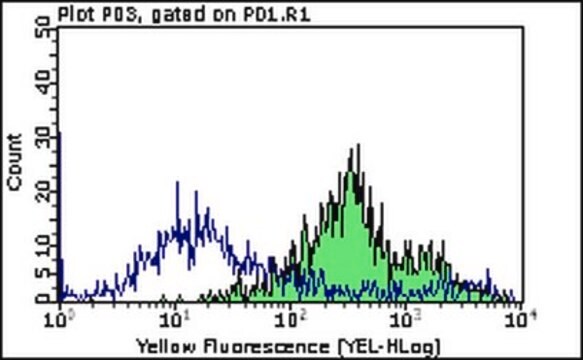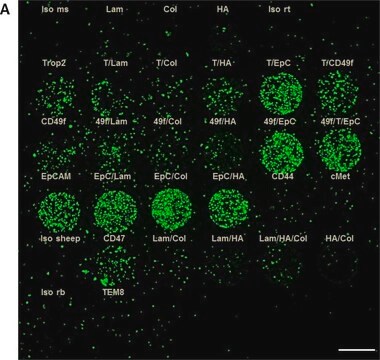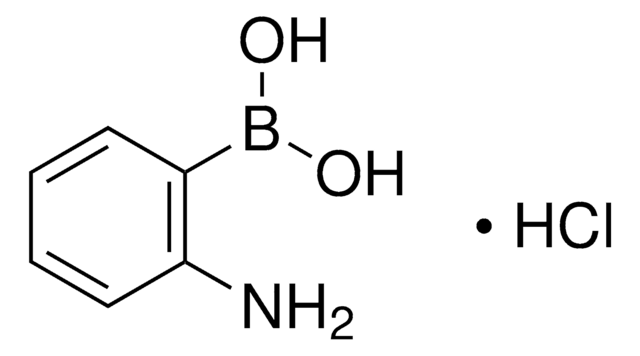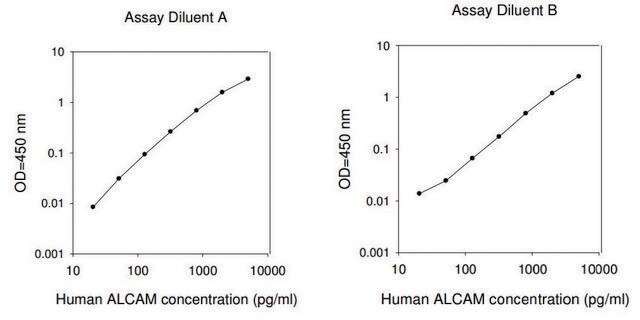C7923
Monoclonal Anti-CD44 antibody produced in mouse
clone A3D8, purified immunoglobulin, buffered aqueous solution
Synonym(s):
Anti-CDW44, Anti-CSPG8, Anti-ECMR-III, Anti-HCELL, Anti-HUTCH-I, Anti-IN, Anti-LHR, Anti-MC56, Anti-MDU2, Anti-MDU3, Anti-MIC4, Anti-Pgp1
About This Item
Recommended Products
biological source
mouse
conjugate
unconjugated
antibody form
purified immunoglobulin
antibody product type
primary antibodies
clone
A3D8, monoclonal
form
buffered aqueous solution
mol wt
antigen 80-95 kDa
species reactivity
human
technique(s)
flow cytometry: 5 μL using 1 × 106 cells
isotype
IgG1
UniProt accession no.
shipped in
wet ice
storage temp.
2-8°C
target post-translational modification
unmodified
Gene Information
human ... CD44(960)
General description
Specificity
5th Workshop: code no. BP406, S320
Immunogen
Application
Flow cytometry/Cell sorting (1 paper)
Anti CD44 monoclonal antibody was used for:
- immunostaining of nonpapillary carcinoma fine-needle aspiration (FNA) or surgical excision specimen.
- flow cytometry analysis to assess breast CSCs in human MCF-7/Dox breast cancer cells.
- staining of CD44 in immunohistochemistry analysis.
- incubation of osteoclasts (OCs) in a study to analyze the molecular composition and F-actin organization of the OC podosome belts.
- It is also suitable for western blot at a dilution of 1:500-1:2,000
Biochem/physiol Actions
Target description
Physical form
Storage and Stability
Disclaimer
Not finding the right product?
Try our Product Selector Tool.
Storage Class Code
10 - Combustible liquids
WGK
nwg
Flash Point(F)
Not applicable
Flash Point(C)
Not applicable
Certificates of Analysis (COA)
Search for Certificates of Analysis (COA) by entering the products Lot/Batch Number. Lot and Batch Numbers can be found on a product’s label following the words ‘Lot’ or ‘Batch’.
Already Own This Product?
Find documentation for the products that you have recently purchased in the Document Library.
Articles
Cancer stem cell media, spheroid plates and cancer stem cell markers to culture and characterize CSC populations.
Our team of scientists has experience in all areas of research including Life Science, Material Science, Chemical Synthesis, Chromatography, Analytical and many others.
Contact Technical Service
